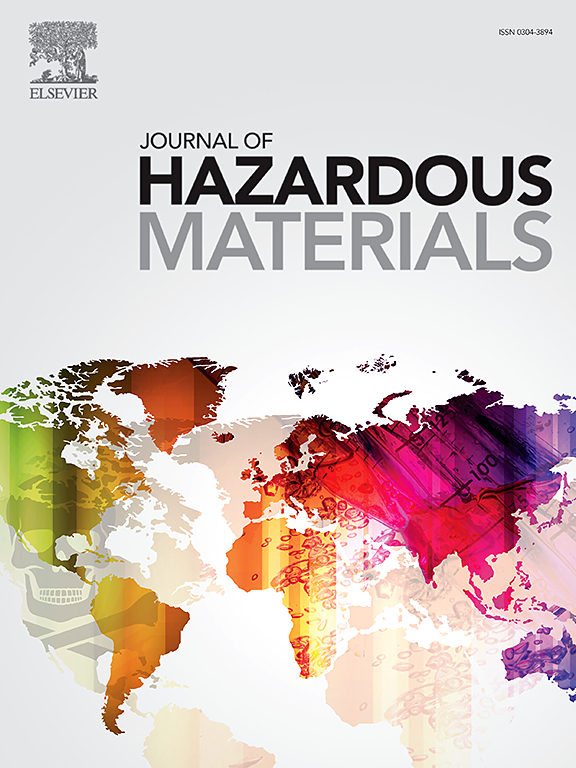Construction of hydrophilic magnetic imprinted covalent organic framework composite for targeted separation and enrichment of tetracycline
IF 12.2
1区 环境科学与生态学
Q1 ENGINEERING, ENVIRONMENTAL
引用次数: 0
Abstract
Tetracycline (TC) contamination poses a serious environmental and public health threat, therefore this work presents a sensitive and selective TC separation and detection method. Hydrophilic molecularly imprinted polymers (IL-MMIPs) were designed for the first time, using magnetic graphene oxide modified covalent organic framework (MGO-COF) as the support, double ionic liquids N-trimethyl-(4-vinylbenzyl) ammonium chloride and 1-vinyl-3-ethylimidazole bromide as functional monomer and cross-linker, respectively. The IL-MMIPs exhibited high adsorption capacity and fast adsorption kinetics for TC through the recognition of surface molecular imprinting and the strong electrostatic interaction and hydrogen bonding between ionic liquids. And the IL-MMIPs showed outstanding water-compatibility thanks to the incorporation of double ionic liquids. Under the optimal conditions, the detection limit of MSPE-IL-MMIPs-HPLC-UV was 0.20 μg/L, and the correlation coefficient R2 was 0.9999. The TC was extracted from medical wastewater by IL-MMIPs with a recovery rate of 93.0-105.3%. Therefore, the established method based on IL-MMIPs has high sensitivity and can be used as a new strategy for the detection of tetracycline antibiotics in water systems.Environmental Implication
As a widely used spectral antibiotic, tetracycline poses a serious threat to the ecology and organisms, as well as breeding drug-resistant bacteria and the development of drug-resistant genes. Effective detection and removal of high concentrations of tetracycline in medical wastewater is urgently needed. In this study, highly selective hydrophilic molecularly imprinted materials integrating ionic liquid via surface imprinting were constructed, which could selectively enrich tetracycline in medical wastewater, achieving accurate detection.

求助全文
约1分钟内获得全文
求助全文
来源期刊

Journal of Hazardous Materials
工程技术-工程:环境
CiteScore
25.40
自引率
5.90%
发文量
3059
审稿时长
58 days
期刊介绍:
The Journal of Hazardous Materials serves as a global platform for promoting cutting-edge research in the field of Environmental Science and Engineering. Our publication features a wide range of articles, including full-length research papers, review articles, and perspectives, with the aim of enhancing our understanding of the dangers and risks associated with various materials concerning public health and the environment. It is important to note that the term "environmental contaminants" refers specifically to substances that pose hazardous effects through contamination, while excluding those that do not have such impacts on the environment or human health. Moreover, we emphasize the distinction between wastes and hazardous materials in order to provide further clarity on the scope of the journal. We have a keen interest in exploring specific compounds and microbial agents that have adverse effects on the environment.
 求助内容:
求助内容: 应助结果提醒方式:
应助结果提醒方式:


